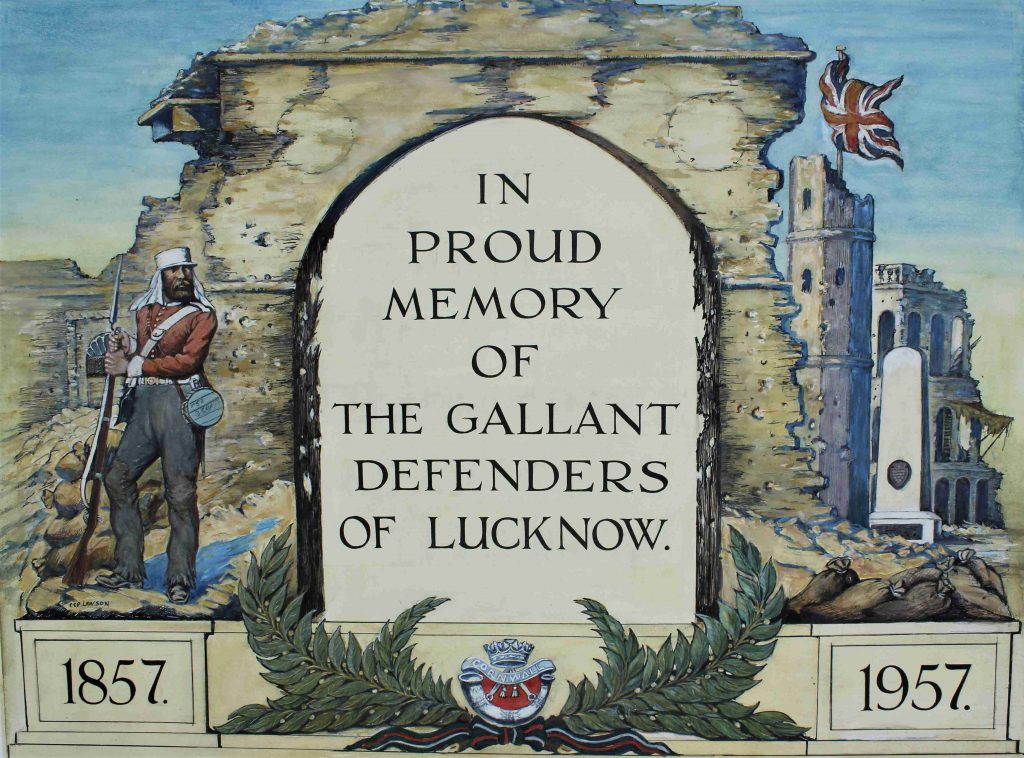By late March 1858, the British and their Indian allies had regained control of Lucknow. By June 1858, they had forced the majority of rebel groups to surrender.
In the aftermath, several political changes were made to try and ensure that an uprising on this scale would not happen again. The rebelling regiments were disbanded while the Indian soldiers who had fought alongside the British were rewarded. Most importantly, the governance of British India was taken away from the East India Company and was directly claimed by the British Crown.
Remembering Lucknow

This painting was created by the artist Cecil Lawson, for the hundredth anniversary of the siege of Lucknow.
Lawson included the granite memorial erected in 1899 by Lady Julia Inglis and soldiers of the Duke of Cornwall’s Light Infantry (DCLI). Lucknow was one of the most important battle honours for the 32nd Regiment and its successor, the DCLI. The actions of the 32nd earned them the title ‘Light Infantry’ in 1858.
Alongside the memorial, Lawrence painted the ruins of the Lucknow Residency (the centre of the British defences). On top of the Residency is the Union Jack which was flown throughout the siege. After the rebellions, the Union Jack was flown for 24 hours a day. It was taken down on 14 August 1947, the day before Indian Independence.
